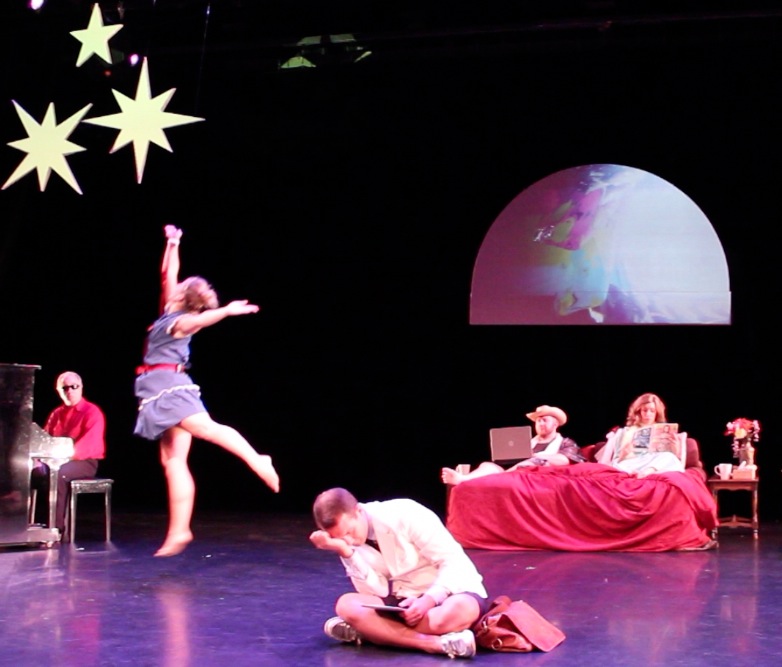
Live Visuals, Leonardo Electronic Almanac, Volume 19 Issue 3
ISBN: 978-1-906897-22-2
ISSN: 1071-4391
Volume Editors: Lanfranco Aceti, Steve Gibson and Stefan Müller Arisona
Editor: Ozden Sahin
Visualization Technologies For Music, Dance, and Staging In Operas
by Guerino Mazzola, David Walsh, Lauren Butler, Aleksey Polukeyev
We discuss the creation of the opera Apocalypse Now…and Then, whose libretto was written by two of the authors (G. Mazzola and D. Walsh) at the School of Music of the University of Minnesota. The music was composed
by Manuela Kerer. A 15-minute scenic summary of the opera has been recorded on DVD in July 2012 and will serve as a basis for the realization of the full opera. The opera’s actions involve God and his wife in heaven
and Jesus with Mephisto on earth, each accompanied by a female dancer. To solve this time-critical double staging problem, we use the Arena 4 software to project still and moving images onstage. The music has various
approaches: score-driven composition, played by a chamber orchestra, ‘commercial’ music, generated from a music file repertory on a laptop, free improvisation, played onstage by a jazz trio, and music generated by the
two dancers using the Arduino body sensor system. Its wireless signals to a laptop became input for FM-synthesis on Max and for real-time control of the music on Ableton Live. We conclude on the systematic aspects of such a ‘multimedia counterpoint’ for the staging technicalities, the narrative implications, and the sound dimension.
Full article is available for download as a pdf here.
Volume 19 Issue 3 of Leonardo Electronic Almanac (LEA) is published online as a free PDF but will also be rolled out as Amazon Print on Demand and will be available on iTunes, iPad, Kindle and other e-publishing outlets.
